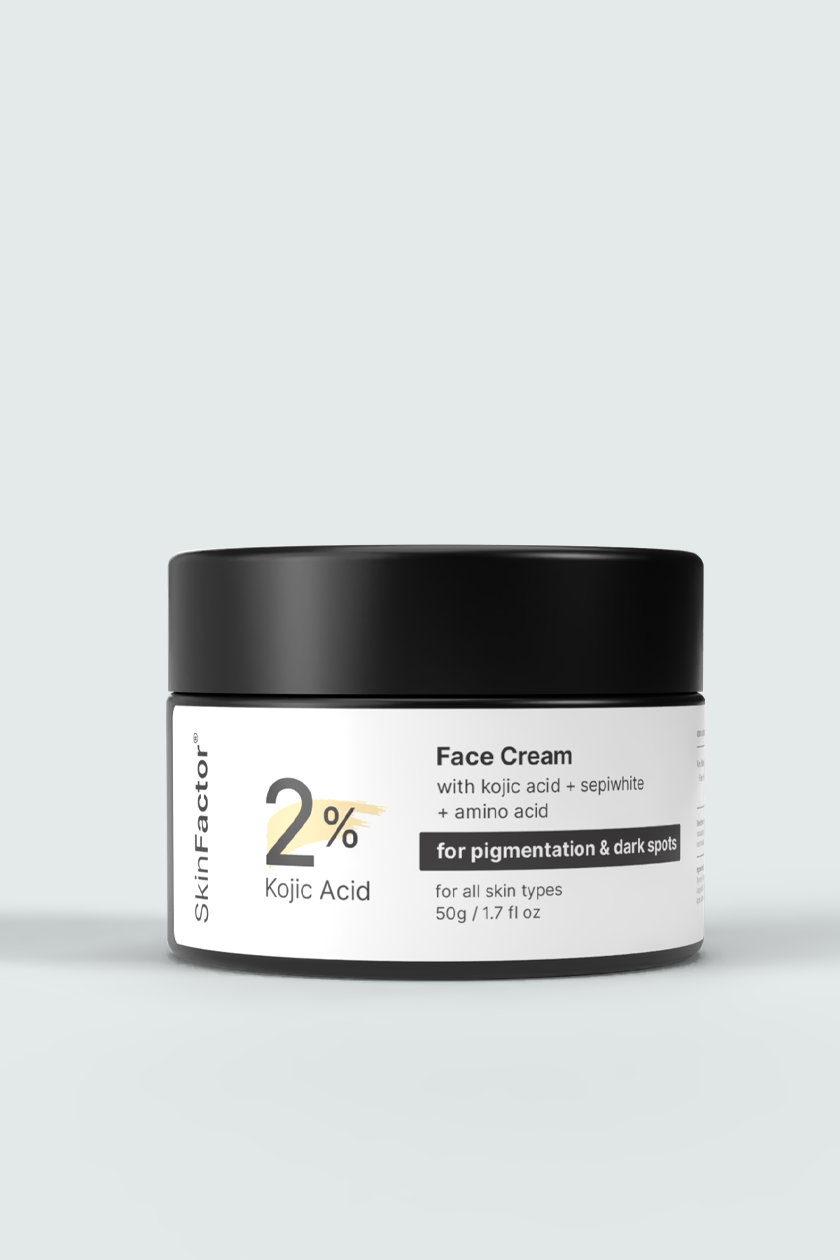When it comes to achieving a brighter, more even-toned complexion, kojic acid cream has become one of the most popular skincare solutions worldwide. Whether you’re dealing with dark spots, melasma, acne scars, or general dullness, kojic acid is often recommended by dermatologists and skincare experts. But what exactly is kojic acid, and how does it work for skin brightening? Let’s break it down.
What Is Kojic Acid?
Kojic acid is a natural compound derived from fungi and is also a byproduct of the fermentation process used to make soy sauce, rice wine, and sake. It is widely recognized for its ability to inhibit melanin production, making it an effective ingredient for treating pigmentation issues.
In skincare, kojic acid is most commonly formulated in creams, serums, soaps, and lotions. skinfactor Kojic acid cream, in particular, is loved for its easy application and long-lasting effects on stubborn pigmentation.
How Does Kojic Acid Cream Work for Skin Brightening?
The skin gets its color from melanin, a pigment produced by cells called melanocytes. Excess melanin production can lead to dark spots, uneven skin tone, and hyperpigmentation. Kojic acid works by:
-
Blocking Tyrosinase Activity
Tyrosinase is an enzyme essential for melanin production. Kojic acid inhibits tyrosinase, reducing the amount of melanin your skin produces. This gradually lightens dark spots and evens out skin tone. -
Fading Existing Pigmentation
With consistent use, kojic acid cream helps fade acne scars, age spots, and melasma, giving skin a clearer appearance. -
Preventing New Dark Spots
By slowing down melanin overproduction, kojic acid cream not only treats current discoloration but also helps prevent new pigmentation issues from forming.
Key Benefits of Kojic Acid Cream
-
Brightens Skin Naturally: Reduces dullness and promotes a radiant glow.
-
Fades Hyperpigmentation: Targets dark spots, freckles, acne scars, and melasma.
-
Anti-Aging Effects: Helps reduce the appearance of sun damage and age-related pigmentation.
-
Antioxidant Properties: Protects skin from oxidative stress that accelerates aging.
-
Gentle Alternative: Considered safer and milder compared to hydroquinone, a commonly used skin-lightening agent.
How to Use Kojic Acid Cream Effectively
-
Cleanse Your Skin before applying the cream to ensure better absorption.
-
Apply a Thin Layer on affected areas or evenly across your face, depending on your needs.
-
Moisturize to prevent dryness, as kojic acid can sometimes make the skin feel tight.
-
Always Wear Sunscreen during the day—kojic acid makes your skin more sensitive to the sun, and skipping SPF can worsen pigmentation.
-
Be Consistent: Results usually appear in 4–8 weeks of regular use.
Are There Any Side Effects?
Kojic acid cream is generally safe for most skin types, but some people may experience:
-
Mild redness or irritation
-
Dryness or flaking
-
Increased sun sensitivity
To avoid side effects, always do a patch test before applying kojic acid cream to your face. If irritation persists, consult a dermatologist.
Final Thoughts
Kojic acid cream is a powerful yet gentle solution for those struggling with pigmentation, acne scars, melasma, or uneven skin tone. By targeting the root cause of dark spots—excess melanin—it helps brighten skin and restore a healthy glow. When combined with consistent use and sun protection, kojic acid cream can be an excellent addition to your skincare routine for long-term results.







